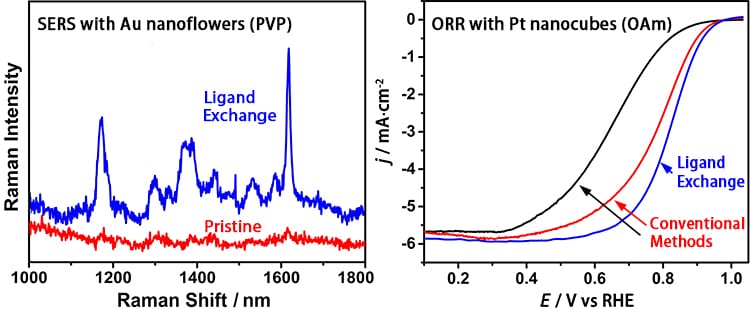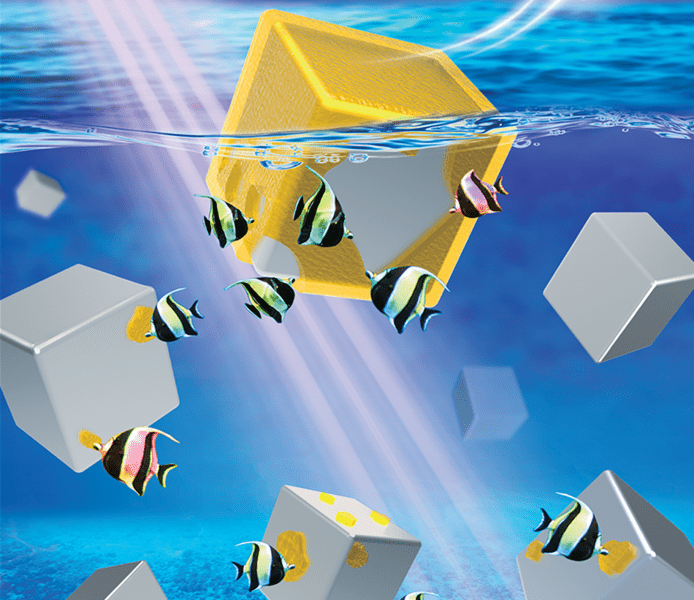Colloidal noble metal nanocrystals have attracted extensive attention in recent decades due to their distinctive optical, catalytic and electronic properties and hence their great potential in many applications. Capping ligands, usually organic molecules, are indispensable to the synthesis of colloidal noble metal nanocrystals, which not only ensures the colloidal property, but also offers an opportunity to tune the morphology and surface structure of the noble metal nanocrystals.
However, the presence of the capping ligands is usually detrimental to the performance of the nanocrystals when they are used in many practical analytical or catalytic applications. To date, a few strategies have been developed to remove capping ligands from noble metal nanocrystals, but these usually rely on harsh physical and chemical processes, making it difficult to retain the morphology and surface structure of the noble metal nanocrystals.
Recently, a research team led by Prof. Chuanbo Gao at the Frontier Institute of Science and Technology, Xi’an Jiaotong University, China developed a mild and robust strategy, which successfully achieves the complete removal of capping ligands, typically polyvinylpyrrolidone (PVP) and oleylamine (OAm), from the surface of noble metal nanocrystals. The capping ligands were replaced by a small-molecule amine, diethylamine, by taking advantage of the strong interaction of diethylamine with the metal surface. Diethylamine was consequently removed by neutralization with a diluted acid, thanks to the significantly weakened interaction after the neutralization. As a result, surface-clean Au and Pt nanocrystals could be obtained without any change in their morphology and surface structure. The team demonstrated that after this surface cleaning step, Au nanoflowers showed significantly enhanced activity in surface-enhanced Raman scattering (SERS), and Pt nanocrystals showed remarkably improved electrocatalytic activity in oxygen reduction, compared with nanocrystals that had their surfaces cleaned by conventional methods.
This novel ligand-exchange strategy opens up new opportunities to eliminate the effect of capping ligands for optimal activity of colloidal noble metal nanocrystals in a variety of applications.

This article is part of a Special Issue on “Plasmonic Particles” published in Particle & Particle Systems Characterization. Click here to go directly to the table of contents, and here to read the Editorial contributed by the guest editors Yugang Sun and Zhiyong Tang.

















